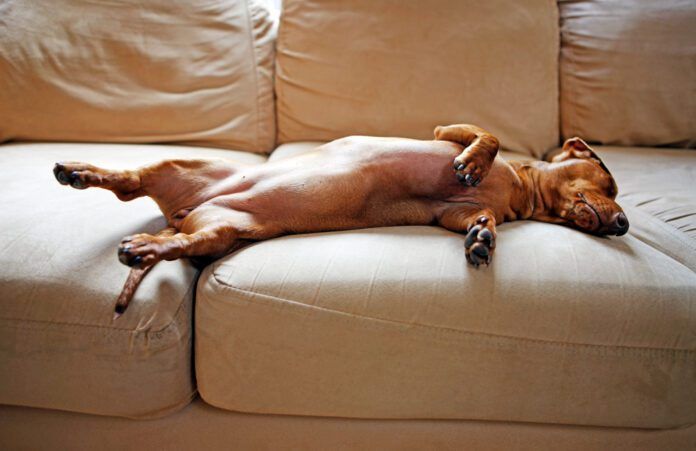Female dogs who pee in their sleep are usually spayed females, ages 2 years and up. It happens due to a lack of estrogen, a female hormone that strengthens the urethral sphincter (outlet to the bladder) but is low in spayed females due to removal of the ovaries and uterus.
When the urethral sphincter is weak and the dog is completely relaxed, like when lying down or sleeping, urine can leak. This is called “urinary incontinence.” These dogs usually have enough sphincter strength to effectively contain urine while awake and active. Overall, the incidence of spay incontinence is low.
Spayed female dog urinary incontinence is called Urethral Sphincter Mechanism Incompetence (USMI) but is better known simply as “spay incontinence.” The first sign is usually finding wet spots where your female dog sleeps or lays down. Other signs include wetness around the vulva, paying more attention to that area, and licking the vulva. You may notice a lingering urine odor back there and/or maroon-colored staining of surrounding hair.
Your veterinarian will usually recommend a urinalysis first to rule out underlying urinary tract infection, which also can cause urinary incontinence. If the urinalysis is normal, treatment for spay incontinence may be prescribed.
The most commonly prescribed medications for spayed female dog incontinence are phenylpropanolamine or PPA (brand name Proin) and estriol (brand name Incurin). PPA works by strengthening the contractility of the involuntary muscles of the urethra. Estriol is a form of estrogen that works by replacing estrogen and its urethral strengthening effect lost due to spay.
Dogs with high blood pressure, kidney disease, or heart disease should not be treated with PPA. Dogs treated with estriol may show signs of heat, including a swollen vulva and unwelcome male dog attention.
One of these medications may work better than the other for your dog. Some dogs require treatment with both medications to control their incontinence. Overall, success rates for treatment of female dog urinary incontinence are high.






